Related Research Articles

Hawke's Bay is a region on the east coast of New Zealand's North Island. The region is named for Hawke Bay, which was named in honour of Edward Hawke. The region's main centres are the cities of Napier and Hastings, while the more rural parts of the region are served by the towns of Waipukurau, Waipawa, and Wairoa.
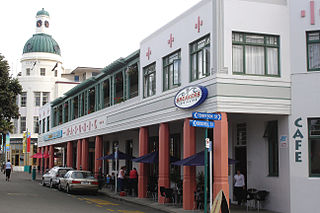
Napier is a city on the eastern coast of the North Island of New Zealand and the seat of the Hawke's Bay region. It is a beachside city with a seaport, known for its sunny climate, esplanade lined with Norfolk pines, and extensive Art Deco architecture. For these attributes, Napier is sometimes romantically referred to as the "Nice of the Pacific".
Waipukurau is the largest town in the Central Hawke's Bay District on the east coast of the North Island of New Zealand. It is located on the banks of the Tukituki River, 7 kilometres south of Waipawa and 50 kilometres southwest of Hastings.
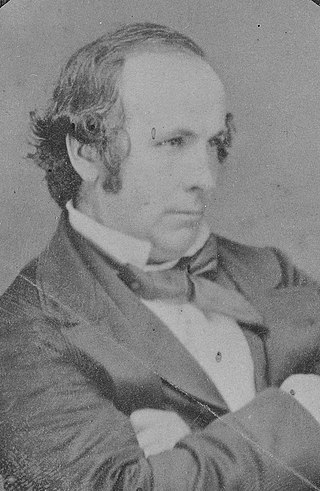
Thomas Henry Fitzgerald was an Irish pioneer in sugar cane farming in the early days of the colony of Queensland, Australia. He was a politician, first in New Zealand, then in Queensland. His descendants went on to become notable names in Queensland politics, business and law. He is best remembered for founding the town of Innisfail.

John Davies Ormond was a New Zealand politician whose positions included Superintendent of Hawke's Bay Province, Minister of Public Works and member of the New Zealand Legislative Council.

William Colenso FRS was a Cornish Christian missionary to New Zealand, and also a printer, botanist, explorer and politician. He attended the signing of the Treaty of Waitangi and later wrote an account of the events at Waitangi.

Napier is a New Zealand parliamentary electorate, returning one Member of Parliament to the House of Representatives. It is named after the city of Napier, the main urban area within the electorate. The electorate was established for the 1861 election and has existed since. It has been held by Katie Nimon of the New Zealand National Party since the 2023 general election. It was held by Stuart Nash of the New Zealand Labour Party from the 2014 general election until 2023, when he did not stand for re-election.
Onekawa is a suburb of the city of Napier, in the Hawke's Bay Region of the eastern North Island of New Zealand. Development of the suburb began in the late 1940s, after the land was acquired from then-Harbour Board.

John Vigor Brown, known as Vigor Brown, was a New Zealand Member of Parliament for Napier, in the North Island. He was Mayor of Napier for a total of 18 years. He was a well-known figure in his adopted city, a successful businessman, and involved in many clubs and organisations.
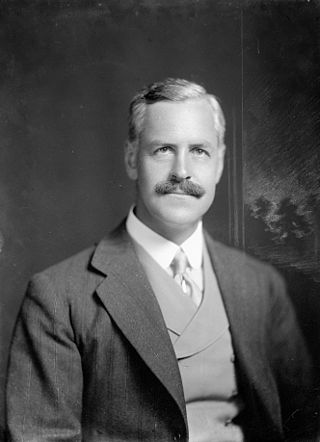
Vernon Herbert Reed was a Liberal Party and from 1912 a Reform Party member of parliament in New Zealand. He was later a member of the Legislative Council.
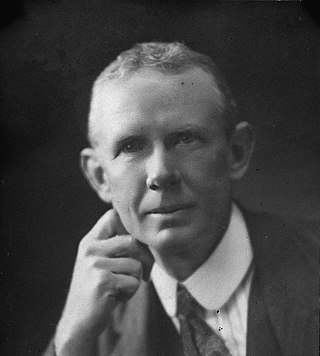
John Mason was a New Zealand politician and lawyer. He was a Reform Party Member of Parliament in Hawke's Bay in the 1920s.
Hawke's Bay was a parliamentary electorate in the Hawke's Bay Region of New Zealand from 1881 to 1996. In 1986 it was renamed Hawkes Bay.
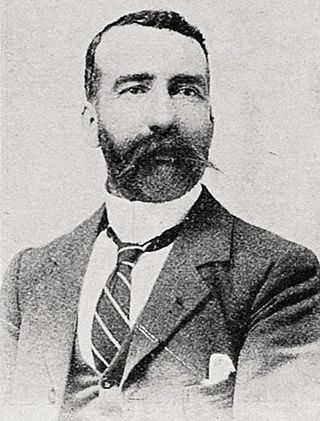
Alfred Levavasour Durell Fraser was a Liberal Party Member of Parliament in New Zealand.
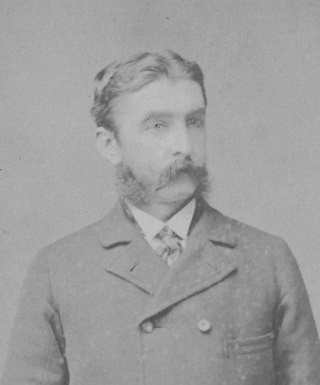
Walter Hippolyte Pilliet JP was a 19th-century Member of Parliament in Christchurch, New Zealand. He worked initially as a surveyor and was then resident magistrate in several places. He was a newspaper editor and was represented in Parliament for one term.
The 3rd New Zealand Parliament was a term of the Parliament of New Zealand. Elections for this term were held between 12 December 1860 and 28 March 1861 in 43 electorates to elect 53 MPs. Two electorates were added to this during this term, Gold Fields District and a new Dunedin electorate created by splitting the existing City of Dunedin into Dunedin and Suburbs North and Dunedin and Suburbs South, increasing the number of MPs to 57. During the term of this Parliament, six Ministries were in power.
The 9th New Zealand Parliament was a term of the Parliament of New Zealand.
The Mayor of Napier is the head of the municipal government of Napier, New Zealand, and presides over the Napier City Council. Napier is New Zealand's ninth largest city. The first mayor was elected in 1875. The current mayor is Kirsten Wise.
Awatoto is a coastal suburb area within the city of Napier, Hawke's Bay, New Zealand. It stretches along the coast south of Te Awa and the central city. The northern part of Awatoto is residential, while the southern part is industrial, including heavy industry.
The 1877 Napier by-election was a by-election held in the Napier electorate during the 6th New Zealand Parliament, on 15 February 1877.

Charles Frederick Baker was an English member of the Church Missionary Society (CMS) active as a missionary in New Zealand in the 19th century. He supervised the construction of the historic church at Russell and was involved in the Treaty of Waitangi proceedings, a collection consisting of his journals and papers was added to the UNESCO Memory of the World New Zealand register in 2018.
References
- ↑ Scholefield, Guy (1950) [First ed. published 1913]. New Zealand Parliamentary Record, 1840–1949 (3rd ed.). Wellington: Govt. Printer. p. 161.
- 1 2 "Local Intelligence". Hawke's Bay Herald. Vol. 4, no. 198. 6 July 1861. p. 5. Retrieved 1 May 2013.
- ↑ "To the Editor of the Hawke's Bay Herald". Hawke's Bay Herald . Vol. 4, no. 201. 27 July 1861. p. 3. Retrieved 20 May 2015.
- ↑ "Notice". Hawke's Bay Herald . Vol. 4, no. 188. 27 April 1861. p. 6. Retrieved 20 May 2015.
- ↑ "Sealy, Henry Bowman". Early New Zealand Photographers and their successors. Retrieved 20 May 2015.
- 1 2 "Local Intelligence". Hawke's Bay Herald . Vol. 4, no. 197. 29 June 1861. p. 4. Retrieved 20 May 2015.